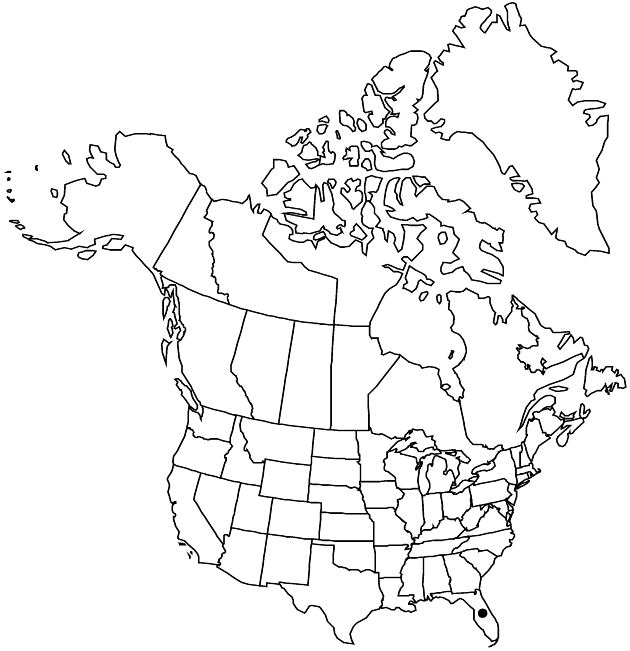Chrysopsis delaneyi
Bot. Explor. 3: 2. 2003.
Weak perennials (sometimes monocarpic, somewhat suffrutescent), 60–150 cm, odor slightly acrid; taproots stout, short (rosettes often atop stems to 15 cm, frequently branched, apparently often requiring several seasons before bolting, initial rosette rarely bolting). Stems (1–) 3–8 (–25), usually ascending or erect, sometimes decumbent (especially on bare sandhill slopes or dunes), frequently branched, densely stipitate-glandular (glands to 0.5 mm) (tips usually nodding before heads form). Leaves: proximal (1/3 to 1/2 of stems) withering, turning brown to blackish before flowering and persisting; basal blades broadly spatulate, oblanceolate, or narrowly lanceolate to nearly linear, 100–180 × (8–) 15–27 (–35) mm, bases narrowly attenuate-cuneate, margins distally serrate-denticulate, coarsely toothed or serrate-denticulate and/or distally shallowly to conspicuously lobed, faces densely woolly and/or densely long-stipitate-glandular; cauline sessile, blades linear-oblanceolate to linear or elliptic-oblong, (30–) 45–110 × (7–) 12–16 (–26) mm, bases slightly auriculate to moderately auriculate-clasping, truncate, margins usually entire, sometimes distally coarsely toothed or serrate-denticulate, apices acute, mucronate to mucronulate, faces moderately hirsute (hairs 0.6–1.5 mm), densely long-stipitate-glandular (larger glandular-hairs 0.3–0.9 mm). Heads 30–70 (–200) (usually nodding in bud) in proximally leafy, compact to moderately open, corymbiform to paniculiform arrays (height usually less than 1/4 plant, branches stout, densely stipitate-glandular). Peduncles 0.5–11 cm, stipitate-glandular (glands 0.3–0.9 mm); bracteoles 1–10, linear-lanceoate to linear, stipitate-glandular. Involucres campanulate to turbinate, 9–10 mm. Phyllaries 3–5 series, erect, linear-lanceolate, 0.7–1 mm wide, strongly unequal, apices usually acute, acuminate, sometimes aristate, inner sometimes obtuse to rounded, faces densely stipitate-glandular. Ray-florets 18–28; laminae (9–) 13–17 (–19) × 2–3 mm. Disc-florets 35–50; corollas 5.5 mm, lobes 0.6–1 mm. Cypselae 2.5–3.5 mm, without ridges, shallowly ribbed or smooth, faces sparsely long-strigose; pappi in 2–3 series, outer of linear scales 0.2–1 mm, inner of ca. 35 ± moderately clavate bristles 4.5–6 mm. 2n = 10.
Phenology: Flowering mid Nov–early Jan.
Habitat: Turkey oak, longleaf pine sandhills, sand pine scrub, hickory scrub
Elevation: 10–60 m
Discussion
Of conservation concern.
Chrysopsis delaneyi is found on the Lake Wales Ridge and on the southern Atlantic Coastal Ridge of the peninsula. The latter populations generally have smaller stipitate glands than those on the Lake Wales Ridge. Orange County plants approach C. scabrella in floral traits, but the leaves have glands larger than 0.3 mm.
Selected References
None.
Lower Taxa
"thin" is not a number."[" is not declared as a valid unit of measurement for this property."]" is not declared as a valid unit of measurement for this property.
